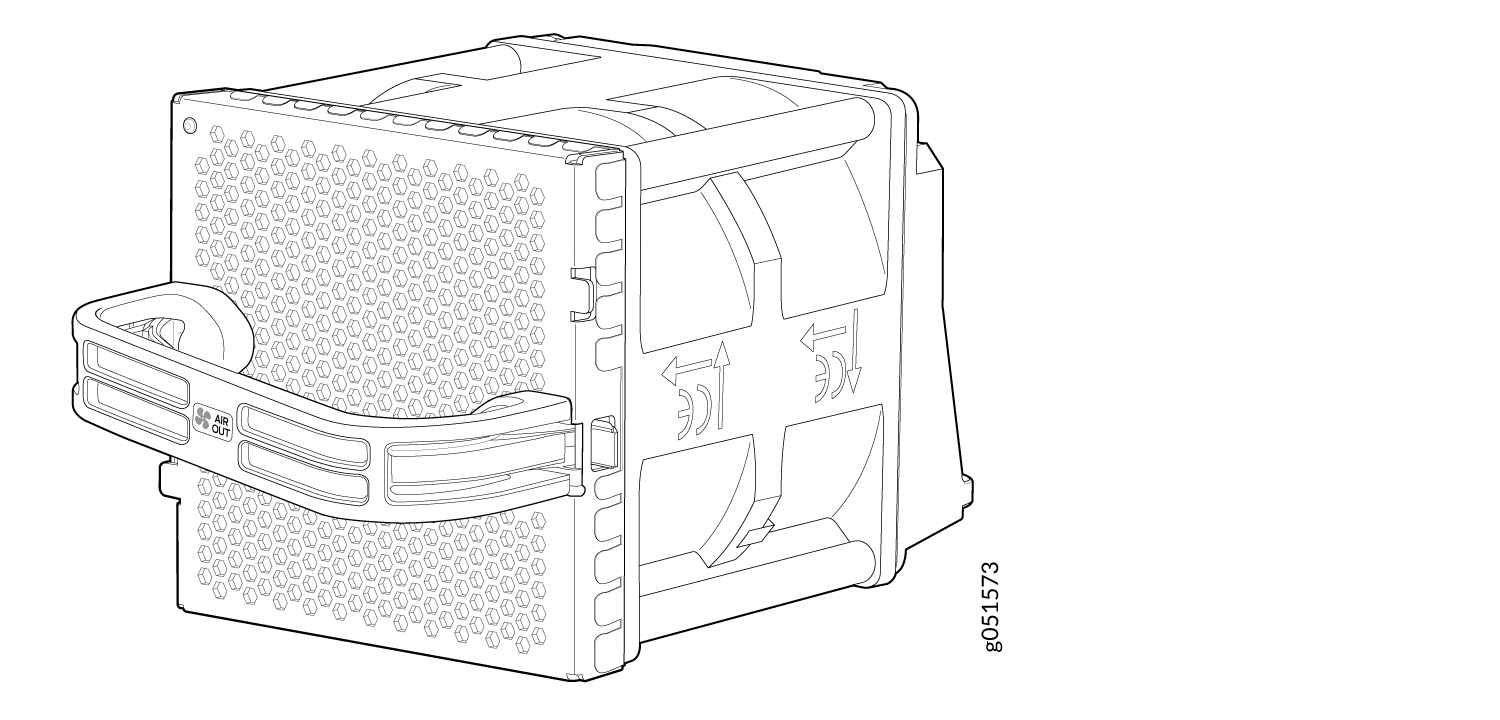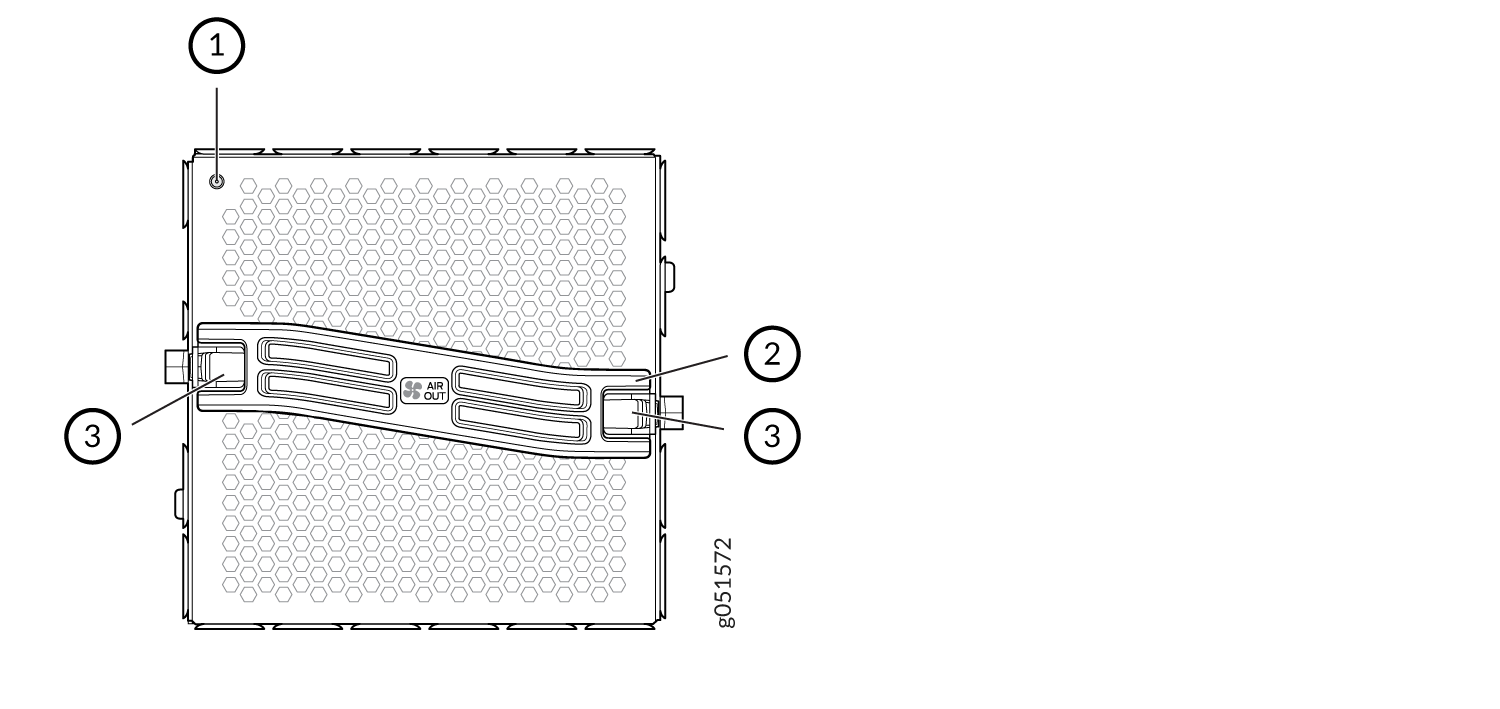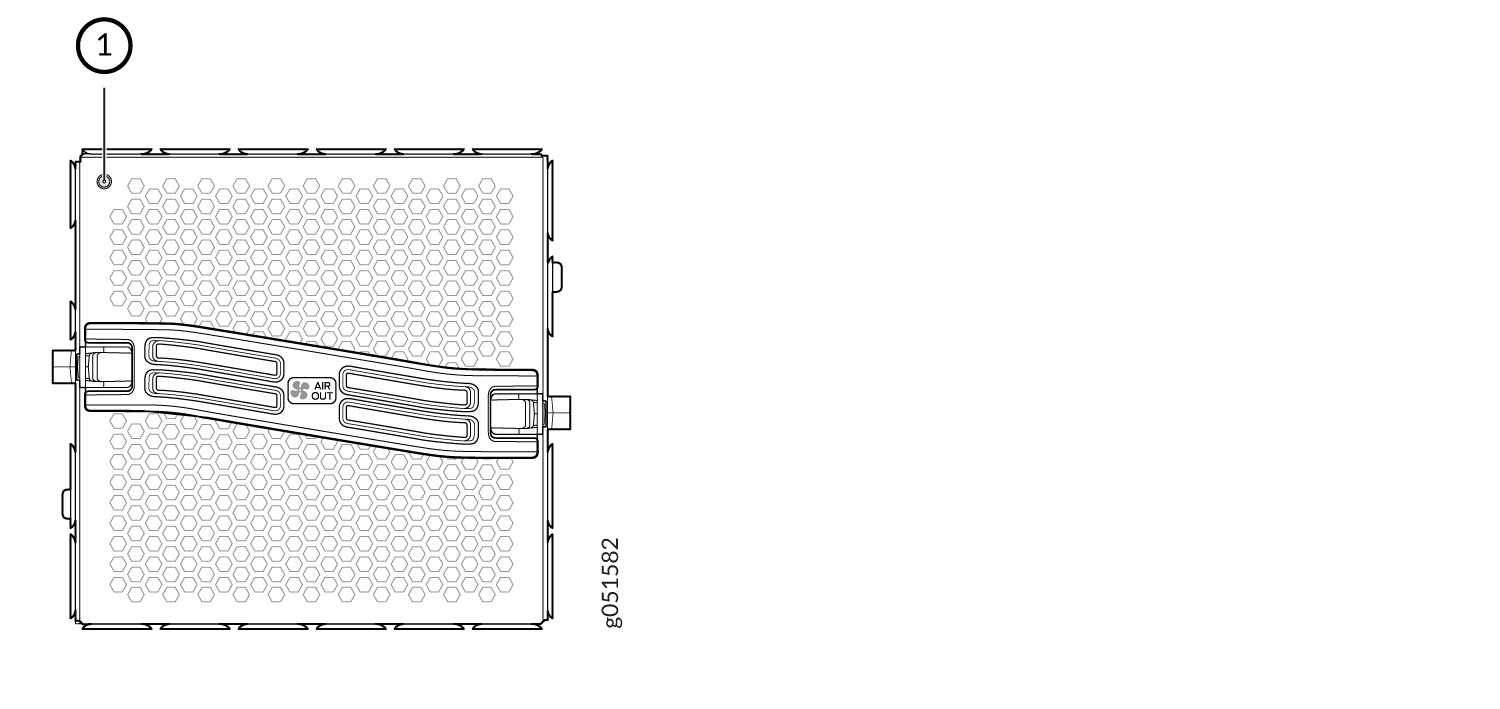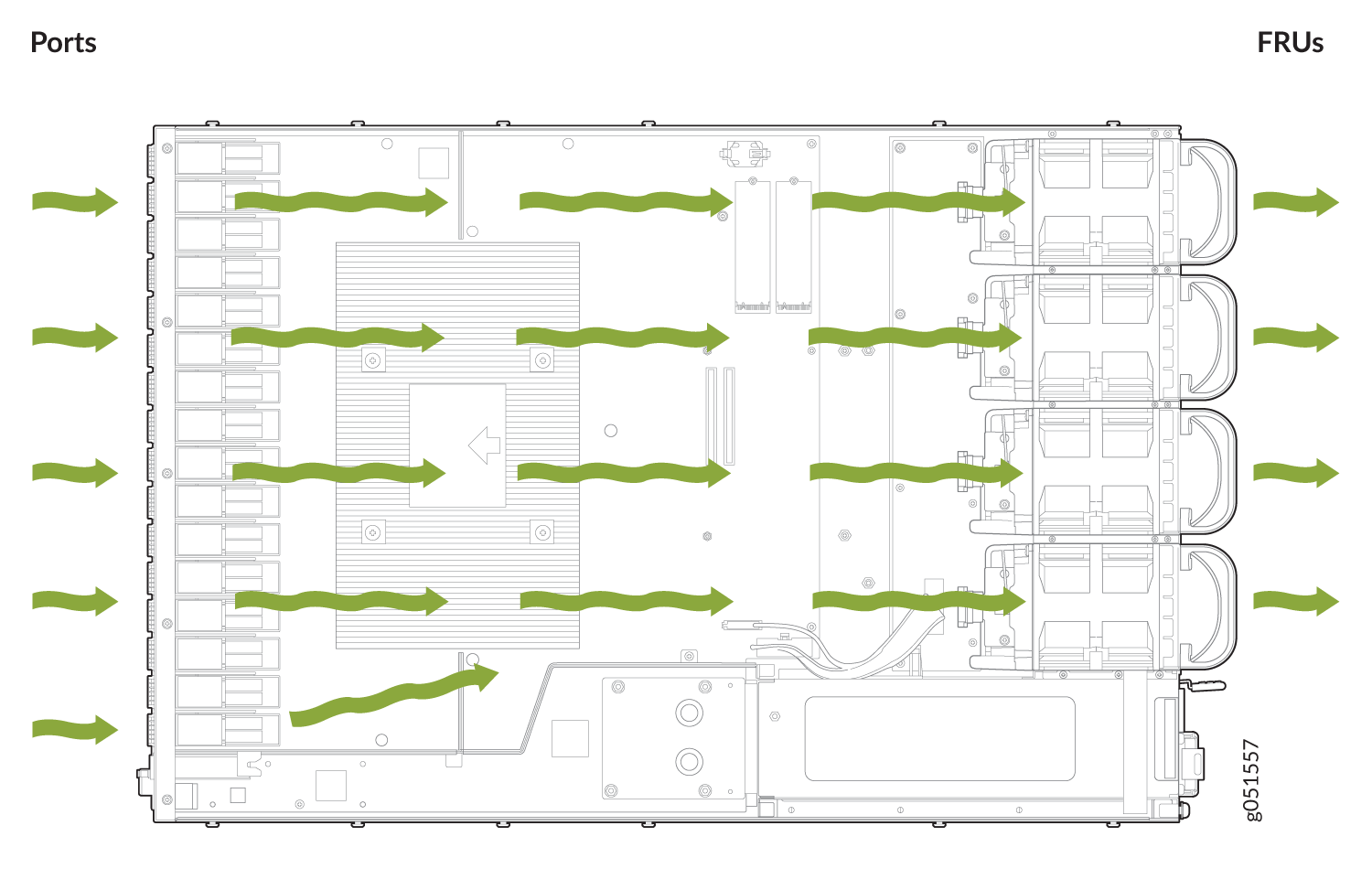- play_arrow Fast Track: Initial Installation
- play_arrow Site Planning, Preparation, and Specifications
- play_arrow Initial Installation and Configuration
- play_arrow Maintaining Components
- play_arrow Troubleshooting Hardware
- play_arrow Contacting Customer Support and Returning the Chassis or Components
- play_arrow Safety and Compliance Information
QFX5240 Cooling System
QFX5240 Cooling System Description
The cooling system components work together to keep all switch components within the acceptable temperature range.
When the switch operates normally, the fans operate at lower than full speed. If a fan fails or the ambient temperature rises above a threshold, the switch's cooling system automatically adjusts the speed of the remaining fans to keep the temperature within the acceptable range. If the maximum temperature specification is exceeded and the system cannot be adequately cooled, the switch shuts down some or all of the hardware components.
The cooling system consists of the following components:
Fan Modules
The QFX5240 has four hot-insertable and hot-removable field-replaceable fan modules (QFX5240-2U-FANAO) installed at the rear of the switch. Each fan module houses two 80 mm x 80 mm counter-rotating rotors.
The fan modules in a QFX5240 are FRUs designed for port-to-FRU airflow, which is also known as airflow out (AFO) or front-to-back airflow. The fan modules are numbered from 0 through 3. Each fan module is 2-U high and has an associated LED to indicate its status. See Figure 1.

The fan speed varies based on the temperature of internal components, optics modules, and the ambient temperature. The maximum speed at which fans operate depends on the configured ambient temperature. As the fan speed increases, the power consumed by the fans increases. As a result, the device consumes more power when the temperature is high because the fans run faster to maintain the operating temperature of the chassis within the configured limits.
The QFX5240 switch must operate with all the four fan modules installed. If you need to replace a faulty fan module, see Remove a Fan Module from QFX5240 Switches.
QFX5240 Fan Module Status LED
Each fan module has one bicolored status LED. See Figure 2.

1 — Fan module LED | 3 — Lock
release handle |
2 — Handle |
Table 1 describes the behavior of the fan module status LED. Figure 3 shows the fan module LED for QFX5240-64OD.

1 — Fan module status LED |
Color | State | Description |
|---|---|---|
Green | On steadily | Fan is functioning normally. |
Red | On steadily | Equipment is faulty and malfunctioning. |
Unlit | Off | Fan module input power failed. |
Under normal operating conditions, the fan modules operate at a moderate speed. Temperature sensors in the chassis monitor the temperature within the chassis.
The system raises an alarm if a fan module fails or if the ambient temperature inside the chassis rises above the acceptable range. If the temperature inside the chassis rises above the threshold temperature, the system shuts down automatically.
Airflow
The switch has a front-to-back (airflow out or AFO) cooling system. The switch pulls air through the front of the chassis toward the fan modules, which exhaust the air out of the switch. See Figure 4.

Power Supply Cooling System
The QFX5420 power supply modules (PSMs) are installed at the rear of the chassis. The PSMs are self-cooling. Each PSM has its own fan and is cooled by its own internal cooling system.
The PSU fan speed is regulated by the internal microcontroller firmware of the PSU. This speed varies from 4000 RPM to 28,000 RPM depending upon the load conditions and temperature variation.
The PSU fan speed variations are in range of 18,000 RPM to 28,000 RPM based on the PSU internal higher temperature condition, This does not affect the system functionality or the lifespan of PSU fans.
The PSMs in an QFX5420 switch support front-to-back airflow (airflow out or AFO).




















